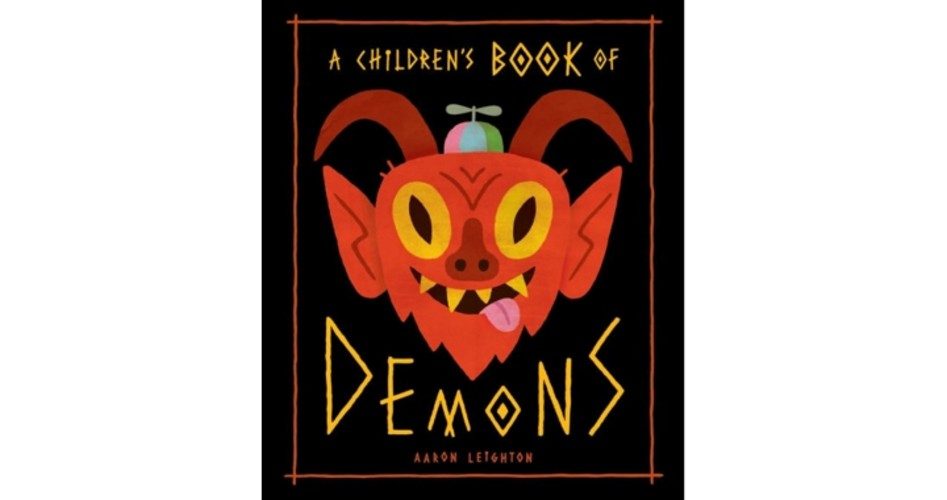
A new book billed as a “playful guide” teaches children how to summon demons for personal benefit. It’s carried by major booksellers, too, such as Barnes & Noble, Walmart, and Target. Amazon sells it as well, even though the lit leviathan has banned a work critical of Islam and one geared toward the elimination of unwanted same-sex attraction.
Barnes & Noble’s poorly punctuated overview of A Children’s Book of Demons states:
Don’t want to take out the trash tonight? Maybe you’re swimming in homework? Perhaps that big bully is being a real drag? Well grab your coloured pencils and sigil drawing skills and dial up some demons! But be careful, even if these spirits are more silly than scary they are still demons.
So if you’re looking to introduce your kids to “Devil worship,” as Breaking Israel News puts it, know that the book’s “publishers try to turn the act of summoning demons into a kid-friendly activity[,] saying: ‘summoning demons has never been so much fun,’” the site relates, quoting the sellers’ “about” section. (Hat tip: WND.com.)
Then there’s Publishers Weekly’s description, which states that author Aaron Leighton
integrates a hands-on craft element into this playful guide that invites readers to conjure gentle demons by writing their sigils, which serve as “a phone number” straight to the spirit. The demons necessitate specific summons (a riddler named Corydon requires a sigil “drawn in bright red, the colour of a clown’s nose — preferably while you’re giggling”), and express specific characteristics and abilities that range from pragmatic to gross. They include “Flatulus,” whose talent is passing gas; “Quazitoro,” an expert at finding missing objects; and “Spanglox,” “the best-dressed demon in the underworld,” who offers cutting-edge fashion advice. Leighton’s renderings of the multieyed, multiarmed, sharp-toothed demons are outlandish without being creepy, and the creative concept will likely inspire some readers to create demons of their own. Ages 5-10.
Leighton is described in his bio as “an award-winning illustrator and art director, as well as a fan of all things occult” — and his works certainly reflect this dark passion.
Unfortunately, Leighton is far from alone in capitalizing on the post-Christian West’s spiritual decay and taste for occult titillation. For instance, 2016 saw the premiere of television series Lucifer, which puts a positive spin on Satan and portrays God as a stern killjoy.
Then, with a Pew Research Center study finding last year that there are now more pagans than Presbyterians in America — with paganism catching on especially in colleges and among the young — it’s no surprise that Wicca (witchcraft) is growing in popularity. This is epitomized, and encouraged, by entertainment such as the 1996 film The Craft and the more recent Charmed and American Horror Story: Coven.
These dark elements are also entering government/public spaces, with satanic invocations at government assembly meetings, “Pagan Pride Days” in many locales, satanic Christmas-season displays, a satanic monument in a veterans memorial park, and U.S. Naval Academy midshipmen now having a Satanic Temple room. Clearly, we’re far removed from the days when George Washington stressed the importance of “the blessing of Heaven on our Arms.”
Instead, exorcisms are now on the rise, and the faithful may say it’s because we’re taking Hell into our arms. And this concern was reflected in the Amazon reviews of the children’s demon book. One incredulous reviewer, Marbel, warned parents that demons “are evil and they don’t care about you or your children. They are liars, deceivers.… They follow Satan and want you and your children to do that same,” WND.com relates. For sure, it’s all fun and games — until your head starts spinning around as you projectile vomit green slime.
Of course, talk of angels, dark or light, is scoffed at by today’s “scientific” secular sophisticates (who, though disbelieving in God, tend to believe a boy can be like god and become a girl just by willing it). As for the 83 percent of Americans with faith in God, however, it should raise their eyebrows not at all.
Consider: If you believe we’re something more than water-and-chemicals-based organic robots — that we have souls — the idea of angels and demons is correlative. After all, a soul is a spirit, and the spirit existed before the flesh; God is a spirit and He existed before all else.
Well, the idea, promulgated via Christian doctrine, is that before God created beings of spirit and flesh (man), He created beings that like Himself are only spirit. Moreover, like man, they have free will and can reject God, which some of them did.
You may or may not believe this, but it’s entirely logical within the context of Christianity’s “data set.” (My 2012 essay “On Angels and Demons” provides a more thorough discussion of this.)
Also logical is that even secularists, if they believe morally bad things exist, should think twice about exalting Satan. To analogize the matter, note that our culture considers the Devil symbolic of pure evil — as the antithesis of the Ten Commandments and all the virtues — much as it does, let’s say, the Nazis. Now, if there were a “playful guide” to “kid friendly” “gentle Nazis,” would it be sloughed off as educational entertainment?
Speaking of the educational, I’ll leave you with the quite apropos, legendary presentation by the late, great Paul Harvey, “If I Were the Devil.”
And now added to Harvey’s commentary can be that if I were the Devil, I’d have demons babysitting your kids.
Image: barnesandnoble.com
Selwyn Duke (@SelwynDuke) has written for The New American for more than a decade. He has also written for The Hill, Observer, The American Conservative, WorldNetDaily, American Thinker, and many other print and online publications. In addition, he has contributed to college textbooks published by Gale-Cengage Learning, has appeared on television, and is a frequent guest on radio.



